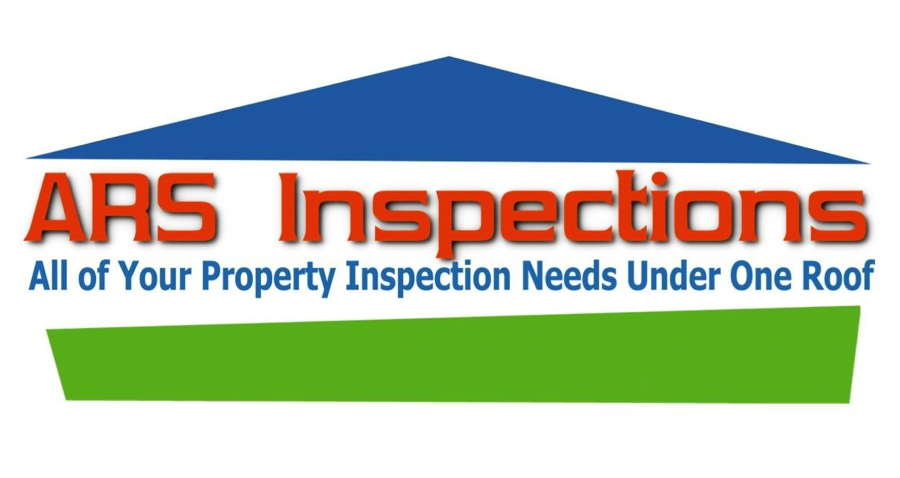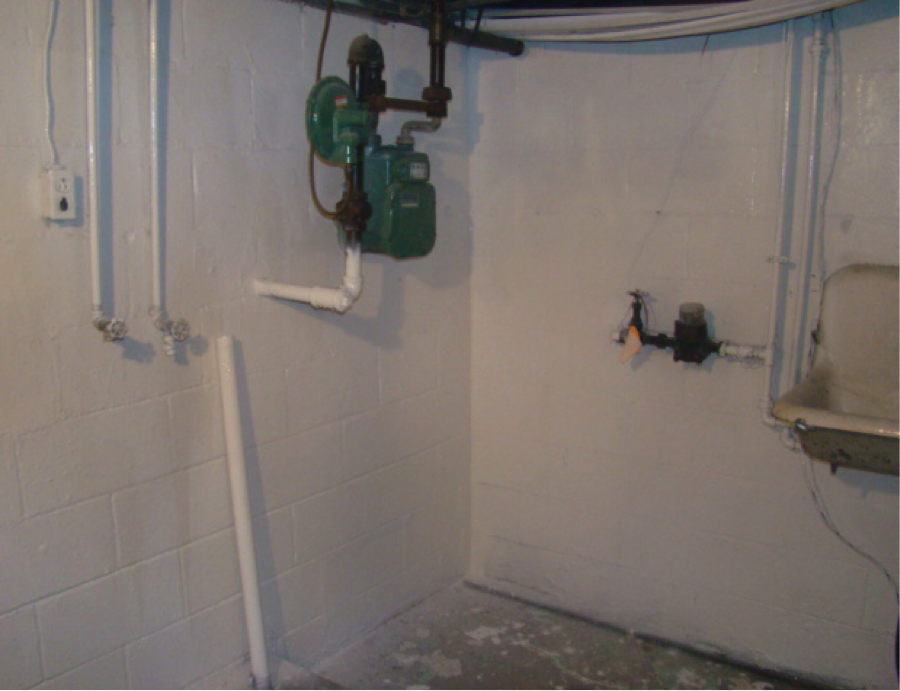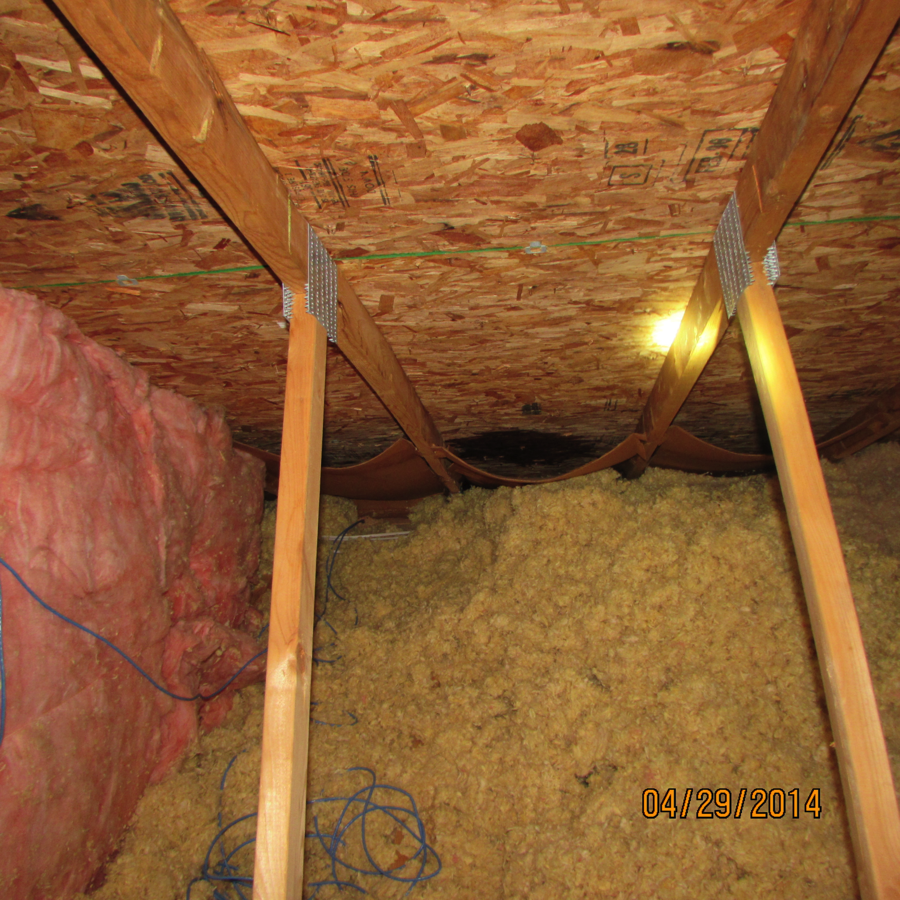Our complete home inspection includes inspecting for visual signs of mold, mildew and moisture, should visual signs be detected we use infrared digital imaging that often can allow us to pinpoint the source.
Our exclusive Mold Guard warranty is provided with the home inspection and for a
period of 90 days overs the
remediation (removal) of mold on surfaces permanently installed in
the home inspected.
See warranty for details
Free mold clean up booklet Click Here
Our Mold Services Include:
Visual mold inspection – consists of a visual inspection of the typical problem areas associated with mold and mildew.
Mold air sampling and mold swab testing require samples to be sent to lab to be analyzed.
Mold Air Sampling – mold spores travel through the air we use a small machine with a spore trap that involves trapping the air particles. We then send this to the lab where they identify the types of spores collected.
Mold Surface Swabs - we skim the surface areas believed to contain mold spores typically we will take two to three samples in various areas. We then send this to the lab where they identify the types of spores collected.
Mold remediation – we provide mold remediation services thru Radon and Mold Solutions.
Clean-up and Removal of Mold: The basic steps
- Identify and remove any sources of moisture. This is the most important – and the most basic – thing you need to do. Mold can’t grow without moisture. And don’t forget to look for sources of moisture that aren’t related to the flood.
- Begin drying any and all materials that got wet. Do this as soon as possible. After the floodwaters have receded, water-soaked building materials and household items can be a significant ongoing source of moisture, promoting the growth of mold. They should be rapidly dried or removed from the building if possible. For severe moisture problems, use fans and dehumidifiers, and move wet items away from walls and off floors. Check with equipment rental companies or restoration firms to see if you can rent fans and dehumidifiers. However, to avoid spreading mold spores, do not operate fans if visible mold is already present.
- Remove and dispose of mold-contaminated materials. Look for mold on porous items that may have absorbed moisture– including sheet rock, insulation, plaster, carpet/carpet pad, ceiling tiles, wood (other than solid wood), and paper products. If you see evidence of mold, these items should be removed, bagged and thrown out. Porous materials that may have been in contact with sewage should also be bagged and thrown away. Non-porous materials can be saved if they are properly cleaned and dried and then kept that way.
- Clean non-porous or semi-porous
items.
Mold can grow on materials like hard plastic, concrete, glass, or metal –
but it can usually be removed with careful cleaning. Solid wood items can
also be salvaged through cleaning, if they are structurally sound. Bear in
mind that mold spores and particles can cause health problems even if
they’re dead. For that reason, when you clean an item, the objective is to
capture and remove the mold contamination.
- For heavily contaminated items, begin by using a HEPA vacuum (not a conventional household vacuum or shop vac) to remove as much contamination as possible.
- If you can’t get a HEPA vacuum, carefully damp wipe the item, to remove as much surface contamination as possible. Rinse wipes often with clean water. Dispose of your wipes and rinse water frequently and properly – they’ll be contaminated with mold.
- After HEPA-vacuuming or damp wiping, thoroughly scrub all contaminated surfaces. Use a stiff brush, hot water, and a non-ammonia soap/detergent or commercial cleaner.
- Collect excess cleaner/cleaning water a wet/dry vacuum, mop or sponge.
- Rinse the surface or item – and the clean-up area -- with clean water. Collect the excess rinse water, and dry everything as quickly as possible.
- Disinfect surfaces (optional). After removing
all visible mold and other dirt or soiling from contaminated surfaces, a
disinfectant may be used to kill some of the mold that may still be
present. Disinfection is not a substitute for cleaning and removal of
mold. However, it’s essential for items that have been in contact with
sewage. If you disinfect, follow these guidelines, and contact the Minnesota
Department of Health for additional advice:
- Mix 1/4 to 1/2 cup bleach per gallon of water and apply to surfaces where mold growth was visible before cleaning. Apply with a spray bottle, garden sprayer, sponge, or some other suitable method.
- Collect any run-off of the bleach solution with a wet/dry vacuum, sponge or mop. Do not rinse or wipe the bleach solution from the items or surfaces being treated — allow it to dry on the surface.
Things You Should Know about Mold
1.Potential health effects and symptoms associated with mold exposures include allergic reactions, asthma and other respiratory complaints.
2.There is no practical way to eliminate all mold and mold spores in the indoor environment; the way to control indoor mold growth is to control moisture.
3.If mold is a problem in your home or school, you must clean up the mold and eliminate sources of moisture.
4.Fix the source of the water problem or leak to prevent mold growth.
5.Reduce indoor humidity (to 30-60%) to decrease mold growth
6.Venting bathrooms, dryers and other moisture-generating sources to the outside
7.Using air conditioners and de-humidifiers
8.Increasing ventilation
9.Using exhaust fans whenever cooking, dishwashing and cleaning
10.Clean and dry any damp or wet building materials and furnishings within 24-48 hours to prevent mold growth.
11.Clean mold off hard surfaces with water and detergent, and dry completely. Absorbent materials such as ceiling tiles, that are moldy, may need to be replaced.
12.Prevent condensation: Reduce the potential for condensation on cold surfaces (i.e., windows, piping, exterior walls, roof, or floors) by adding insulation.
13.In areas where there is a perpetual moisture problem, do not install carpeting (i.e., by drinking fountains, by classroom sinks, or on concrete floors with leaks or frequent condensation).
14.Molds can be found almost anywhere; they can grow on virtually any substance, providing moisture is present. There are molds that can grow on wood, paper, carpet, and foods.
Conditions for Mold growth indoors
Besides oxygen and organic materials containing carbon to provide nutrients, a main requirement mold needs to grow is moisture. You can find mold growing almost anywhere provided there is enough of a moisture source for it.
The moisture accumulation could be caused through humidity, condensation, or water intrusion from leaks, spills, floods, etc. Most molds only require suitable materials to be wet for 24-48 hours before they can grow.
Damp or wet crawlspaces provide a great place for mold growth.
Molds that can survive using only humidity as their moisture source are called Xerophilic, whereas other molds require an accumulation of moisture to grow. (Mold growth on bread is an example of food spoilage by xerophilic organisms.) Indoors the best way to prevent mold growing is to limit moisture.
Besides moisture, most molds also need the temperature to be right before it can begin to grow. Mold grows best in temperatures that we would consider warm. If a mold colony's environmental conditions become unfavorable, instead of dying it can lay dormant until conditions become right again when it can continue to grow.
What is the difference between Mold and Mildew?
Mildew refers to certain kinds of mold or fungus. The term mildew is often used generically to refer to mold growth, usually with a flat growth habit. Molds include all species of microscopic fungi that grow in the form of multicellular filaments, called hyphae. Molds can thrive on any organic matter, including clothing, leather, paper, and the ceilings, walls and floors of homes with moisture management problems. Mildew often lives on shower walls, windowsills, and other places where moisture levels are high. There are many species of molds. In unaired places, such as basements, they can produce a strong musty odor.
The photo above is a basement block wall where mold has started to form from moisture entering from the exterior of the foundation.
The photo above is drywall in a basement that had water enter notice the mold growing up the wall
The photo above is of an attic where ice damming has caused mildew mold to build up at the base of the sheeting.
How to Identify the Cause of a Mold and Mildew Problem
Mold and mildew are commonly found on the exterior wall surfaces of corner rooms in heating climate locations. An exposed corner room is likely to be significantly colder than adjoining rooms, so that it has a higher relative humidity (RH) than other rooms at the same water vapor pressure. If mold and mildew growth are found in a corner room, then relative humidity next to the room surfaces is above 70%. However, is the RH above 70% at the surfaces because the room is too cold or because there is too much moisture present (high water vapor pressure)? The amount of moisture in the room can be estimated by measuring both temperature and RH at the same location and at the same time. Suppose there are two cases. In the first case, assume that the RH is 30% and the temperature is 70oF in the middle of the room. The low RH at that temperature indicates that the water vapor pressure (or absolute humidity) is low. The high surface RH is probably due to room surfaces that are "too cold." Temperature is the dominating factor, and control strategies should involve increasing the temperature at cold room surfaces. In the second case, assume that the RH is 50% and the temperature is 70oF in the middle of the room. The higher RH at that temperature indicates that the water vapor pressure is high and there is a relatively large amount of moisture in the air. The high surface RH is probably due to air that is "too moist." Humidity is the dominating factor, and control strategies should involve decreasing the moisture content of the indoor air.
What is Mold?
Mold is everywhere. There are more than 100,000 species of mold in the world and at least 1,000 common species are found in the United States. Some molds are beneficial. such as those used to make cheese and medicines. Some however can cause serious illness and, in some cases, even death.
Growing mold produces tiny spores in order to reproduce. The mold then ejects the spores which will float through the air looking for a suitable place to begin new growth. All mold needs to get started is suitable material with a surface moisture content of about 20%. This level of moisture can be achieved by simply surrounding wood with air at 90% relative humidity at any temperature between 40 to 100 degrees Fahrenheit. When mold spores land on a suitable damp spot they will begin to grow and digest the host material to survive. In this respect, mold is considered to be a wood destroying organism.
Common places for mold growth in homes include bathrooms, kitchens, laundry rooms, basements and crawl spaces, air conditioning ductwork and equipment, and concealed places between walls and floors. Mold can basically be found anywhere where the moisture level permits its growth.
Aspergillus, Penicillium, and Stachybotrys.
These three families of molds tend to get the most recognition whenever mold is mentioned in relation to contamination problems in the home. Each of the families contain numerous strains and collectively they represent several hundred species, many of which are potentially harmful.
The stachybotrys family is debatably the nastiest of the three and its various strains are often associated with the above mentioned health problems. Stachybotrys, like many types of mold, is greenish black and typically grows on materials with a high cellulose content that are chronically wet.
There are numerous cellulose containing materials used in home building, everything from drywall to insulation to wood and paper products. Chronic moisture can be caused by everything from high humidity to plumbing leaks to unintended water penetration.
Quality Inspections Since 1988: Real estate inspection reports, home inspection, commercial building inspections, termite inspection, gas line inspection warranty, radon testing, mold testing and private well water testing Services in Muskingum County, Perry County, Guernsey County, Licking County and Franklin County. Service Areas: Ohio Home Inspection and Ohio Home Inspector in, Zanesville Ohio, Nashport Ohio, Roseville Ohio, New Lexington Ohio, Somerset Ohio, Newark Ohio, Granville Ohio, Reynoldsburg Ohio, New Albany Ohio, McConnelsville Ohio, Dresden Ohio, Philo Ohio, Duncan Falls Ohio, Frazeysburg Ohio, Coshocton Ohio, New Concord Ohio, Cambridge Ohio, Coshocton Ohio








